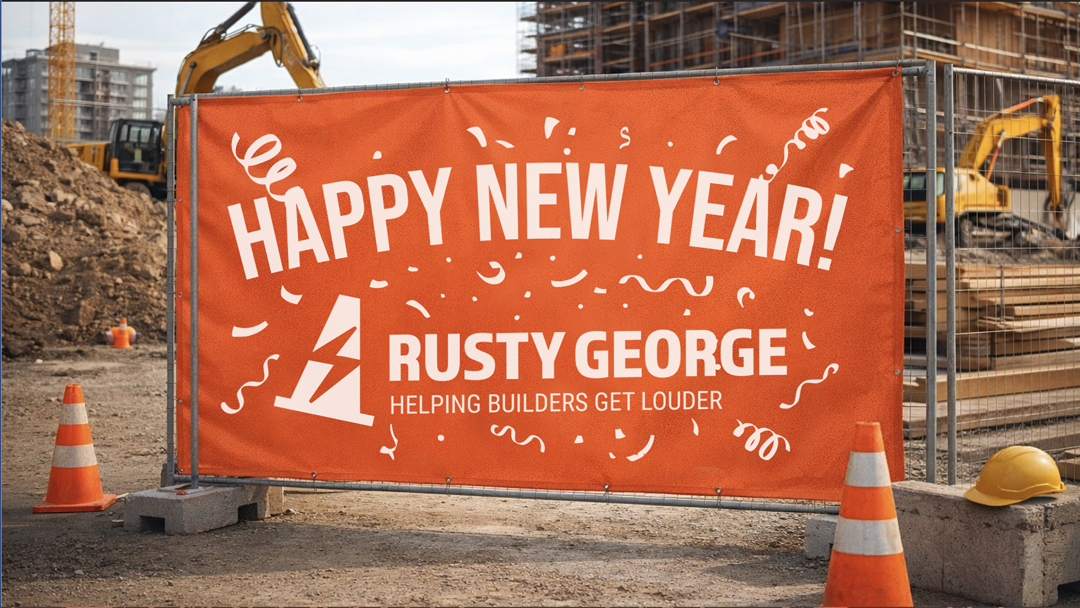Killer Photography Leads to Bigger Construction Projects
You are only as good as your best imagery. That's especially true in the building industry, where the best photos tell the best story about your brand.

Quality construction photography could be the differentiator in your biz dev materials.
We have a lot of mantras at Rusty George. But one, in particular, has stuck with us for nearly 25 years: You are only as good as your best imagery. So what does that mean for building professionals? It means that a picture is worth a thousand words – and the best photos tell the best story about your brand.
One of the most effective uses of imagery in the building industry is to demonstrate your skills and document projects on your company website. In addition to making your business look professional, the alt text (or alt tags) connected to the imagery on your website will improve overall brand awareness. Specifically, alt text helps screen-reading tools describe pictures to visually impaired web users and increases search engine optimization (SEO) value by enabling search engines to navigate and rank your website.
Beyond including imagery on your website, incorporating it in your proposals, social media posts, and cue sheets can be a game changer. Pro tip: Building professionals love progress pictures. Think about what your prospective clients might want to see in a photo. Should it just be a picture of the building? Or should you shoot at an angle that better highlights your core skills? Showing versus telling a prospective business partner what you’re capable of might give you the competitive edge that wins the bid.
It’s also important to remember not all photographs are created equal. And that incorporating low-resolution photos versus high-quality imagery with a story to tell could be the difference between presenting yourself as two Chucks in a truck versus a well-oiled machine equipped to grow your team and increase your project pipeline.
We understand the characteristics of a “good” photograph are subjective. However, there are a handful of things that all good photos do: They catch the eye of a prospective customer, help to simplify complicated concepts and enhance the appeal of a product or service (Weebly).
And while the marketing value of strong imagery warrants an investment in professional photoshoots, we also understand not every business has the budget to hire a fancy photographer. Thankfully, the evolution of technology means nearly everyone on a job site has a near-professional camera in their pocket. If you decide to take that route, here are some photo-taking tips to keep in mind:
Find balance. Taking photos in a way that ensures objects, tones, and colors are of equal visual weight throughout the composition. A balanced image is more exciting and more appealing to the eye.
Shoot away from the sun. When shooting in sunlight, it’s all about the time of day you’re shooting and how you use the light. Shooting toward the sun at midday gives photos an overexposed look and increases color saturation and contrast.

Shoot working machinery. Photos of your machinery in action will explain what you do better than any text can. Use strong imagery to connect with people and showcase your capabilities.
Focus on what’s most important. Proper framing provides context to the subject of your photo and helps the viewer understand the overall story. Ask yourself, "What needs to be in the photo and what doesn't?" Only include what you need and edit out the extra stuff.
Follow the “rule of thirds.” The rule of thirds is a composition guideline that places the subject of your photo in the left or right third of an image, leaving the other two thirds more open. This generally leads to more well-composed shots.

Get creative with your angles. Keep in mind that low-angle shots are generally more compelling and can make the subject of your photo more dominant and dramatic.

Crop rather than zoom. Zooming too far tends to make the image more grainy than it has to be. Cropping a photo allows you to cut unnecessary details and get the composition right without sacrificing image quality.
Use a tripod. A tripod offers improved stability and allows for sharper images. If you have the proper equipment, you can also use a tripod to capture video footage. But the same mantra applies to video: it needs to be high-quality!
Add a human element with candid shots. Featuring candid shots of your team in action presents the perfect opportunity to show what your company does and what your company culture is all about. These shots also allow you to highlight the scope and size of your projects.

Even the best imagery won’t translate if not presented to the right audience. Think about which images will work better on your website versus your LinkedIn page versus your Facebook page. Then find out where different types of clients spend their time – and post accordingly.
The moral of the story is that you don’t want to treat imagery as an afterthought. Instead, respect the documentation of your work as an integral part of construction marketing and a business development tool that can enhance your brand. Providing high-quality photos and information across all your marketing materials can go a long way in creating trust – even with people you have yet to engage. It might even inspire them to pick up the phone or shoot you an email.
Sources: Fraley Construction Marketing, Brandignity, Tweak Your Biz
MORE Insights
Unlock the secrets to transforming your construction company into a marketing powerhouse with Louder Builder.

2026 Starts Now. Five Reminders to Strengthen Your Year Ahead

Small Moves Now. Big Wins Next Year
SIGN UP FOR UPDATES
We will send you our latest insights from Louder Builder as they are released.
CONTACT US
Are you ready to begin your project today? Just have a few questions?
Either way, let’s talk.
